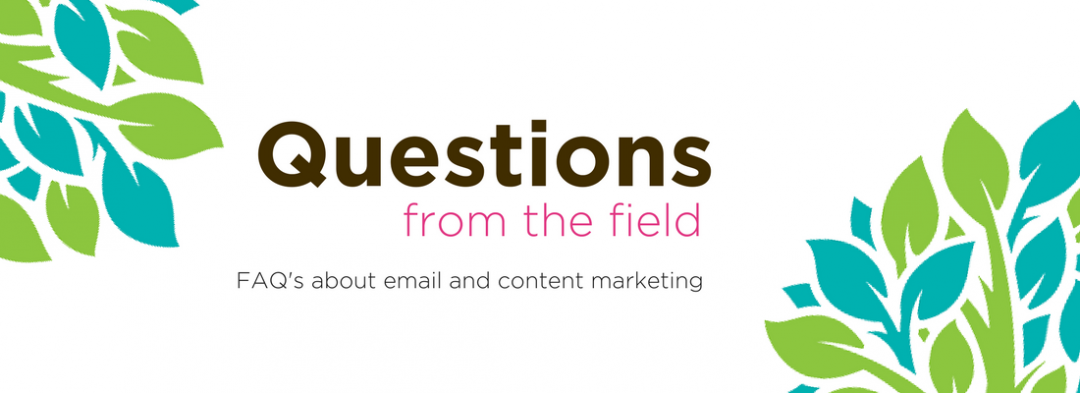One of the most common practices of email marketers is to neglect taking the time to re-engage their audience. A misconception that typically stems from upper management is that quantity of subscribers is better than the quality of subscribers. The assumption is: the more email addresses a email campaign is sent to, the greater the opportunity for our audience to convert. Actually, quite the opposite is true. With quality, engaged email addresses, you’ll find your conversion metrics to be greater and you’ll stay away from spam traps and the dreaded junk mailbox.
So When Should You Re-engage?
It’s Just Time.
Hanging on to unengaged subscribers just muddies up your metrics and most importantly your relationship with ISP’s (the email inbox) like Gmail. Try to ignite engagement with an exceptional offer, or a reminder of a previous purchase or experience like the Shutterfly example I talked about in a recent post. This is also a good opportunity to ask for feedback to understand why the subscriber has lost interest. Asking questions often leads to a theme or trend that you may be missing.
A&W Restaurants conducts an annual re-engagement campaign sending a survey about their Mug Club experience to those that have not opened or clicked a single Mug Club email in six months. Those that choose not to respond after receiving two email campaigns in a 14 day period, are unsubscribed. Those that do respond get a nice limited-time offer and entered into a drawing to be chosen as one of three subscribers to receive $50 in Bear Bucks. The insight obtained leads to improvement with their Mug Club program.
Eliminate Friction Before it Sparks!
You’ve Changed Your Send Cadence.
Think about your own inbox and how you would react if you suddenly started to receive an influx of email from a company. Most likely you would become annoyed and either unsubscribe or ignore the emails entirely. Be courteous: announce an upcoming change to your cadence or content and give your subscriber the opportunity to opt-in or opt-out by visiting the preference center.
Hyde Park Jewelers would send a campaign the first of November each year to inform of an upcoming increase in holiday sends and provide an option for subscribers to update their preferences. This option allowed for deeper segmentation into categories called Fashionista, Watch Enthusiast or Special Events that were self-identified and eliminated a subscriber receiving every piece of email the company sent.
Policy or Regulation Change
You Have a Regulation or Privacy Update.
If your industry or company requires notification to your subscribers regarding a change in regulation, membership, policy, etc. then take this opportunity to check in with all subscribers to see if your content is on target or where can you improve. A use case would be a quarterly or yearly statement within the financial industry. Direct them to their email preference center to confirm or make adjustments. This reiterates that you are attentive to their interest and leads to a good experience for your subscriber.
Start a Transition With a Clean List
You’ve Changed Email Service Providers.
Start clean and build a good sender reputation with your new email service provider. ISP’s look at positive behaviors by your subscribers to determine if your message is worthy enough to make it into the inbox or should go directly to the junk mail box. They look at whether your subscribers open, delete, save your emails in a folder, or save your sender email address to their address book, etc.
Recently we transitioned Lexington Podiatry from one email service provider to another that fit their needs better. Prior to the transition, the marketing team cleaned house. If a subscriber had not interacted with them during the previous six months, they were not imported. This not only saved on the expense of each subscriber, it also told the ISP’s that the people they were sending to wanted to receive their monthly newsletters, appointment reminders, birthday messages and follow-up surveys through the positive interaction by the subscriber.
Build a Strong Foundation
You Need Answers.
It is important to keep a clean list and re-engage for the reasons mentioned above, but also just to know your audience better. Their interaction leads to knowledge to create not only stronger email campaigns, but also content and programs across your entire marketing mix.
Incorporating lifecycle email messaging will build a strong foundation and — because these campaigns are the most relevant — keep your subscribers engaged. Start with your welcome campaign and turn it into a welcome series for efficient and informative on-boarding. Build trust with your new subscriber by sharing information about your company, culture, social channels and relevant products, etc. Ask questions to obtain insight leading to additional lifecycle campaigns such as happy birthday, happy anniversary or interested product updates and use accessible data to send appointment reminders, customer service surveys or win-back campaigns. All of these lifecycle campaigns, even a re-engagement campaign, can be automated with most email service providers depending on your functionality and data available.

Lisa Wester
Chief Engagement Officer
To learn more about this subject, I highly recommend you take time to listen to this Marketing Cloudcast interview with Andrew Barrett followed by this informative post by the Salesforce Marketing Cloud.
I’ve also collected the list of resources below:
A Guide to Spam Traps + How to Avoid Them
Should you say goodbye to inactive subscribers?
5 steps for re-engaging your subscriber lists (and saving money)
If you would like to talk about re-engaging your audience, please reach out.

